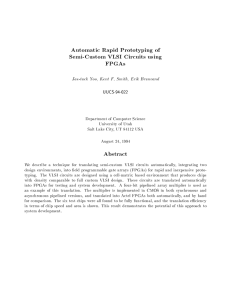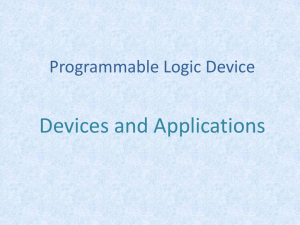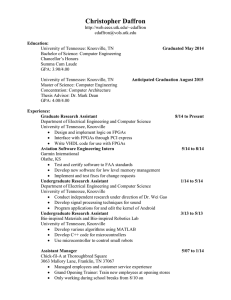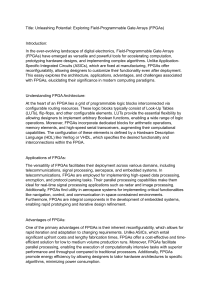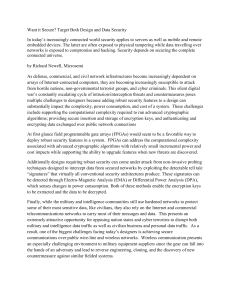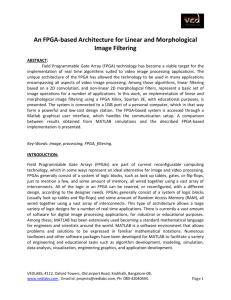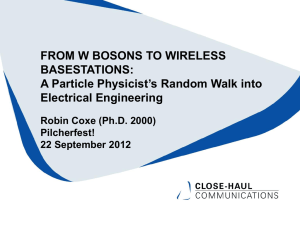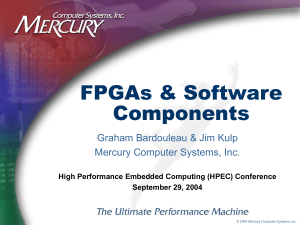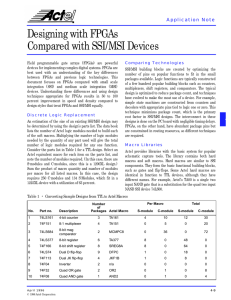FPGAs & Software Components Graham Bardouleau & Jim Kulp Mercury Computer Systems, Inc.
advertisement
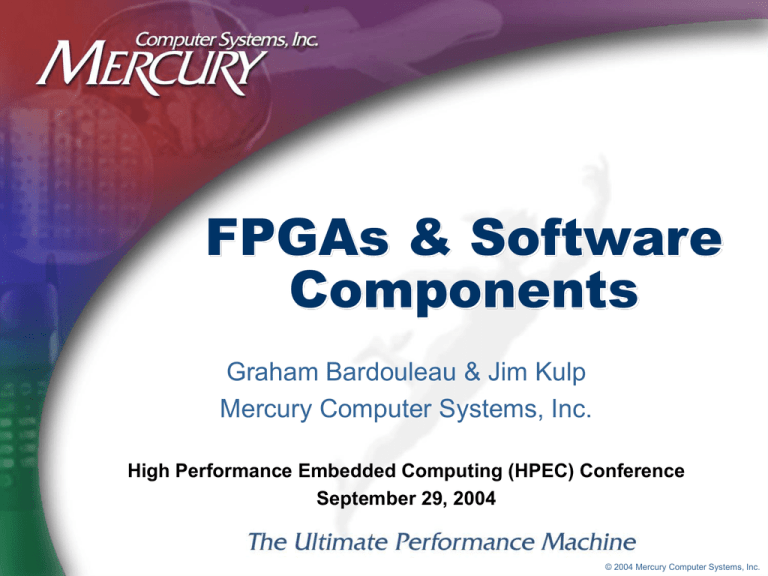
FPGAs & Software Components Graham Bardouleau & Jim Kulp Mercury Computer Systems, Inc. High Performance Embedded Computing (HPEC) Conference September 29, 2004 © 2004 Mercury Computer Systems, Inc. FPGAs & Software Components Introduction FPGAs can now be used as scalable processing resources in heterogeneous multicomputers, not just I/O enhancers. Many applications need multiple processor types for “best fit” (power, weight, etc.). We must enable FPGAs to be “full peers” without undue tax on the FPGAs resources. Our approach has two thrusts: Component programming models at application level and component level, building on standards. Infrastructure elements that enable a common control and communication model between peer processors, including the “middleware” for FPGAs © 2004 Mercury Computer Systems, Inc. 2 FPGAs & Software Components Programming Models Application programming must enable all processing resource types to be easily integrated (and changed/inserted). Component (software) model does this Standards are established for this (OMG and JTRS) Build on this heterogeneous model to embrace FPGAs Effective use of FPGA technology still requires writing VHDL, and sometimes special features/macros of specific FPGAs. Define and enable standard VHDL interfaces for external interactions, enabling peering with other component types Provide more portability and less dependency on choices of FPGA, fabric technology and peer processor types © 2004 Mercury Computer Systems, Inc. 3 FPGAs & Software Components Infrastructure Developments How to “bring FPGAs into the first world”? A common control model and mechanisms that can work across processor classes: Load, initialize, configure, start, stop, connect, etc. A data movement and synchronization model that can be supported locally everywhere Streaming, data reorg, and request/response messaging The FPGA driver and proxy code to treat FPGAs as “computers that can load and run code that talks to others” On-chip lean infrastructure (IP) to enable it all to work © 2004 Mercury Computer Systems, Inc. 4
